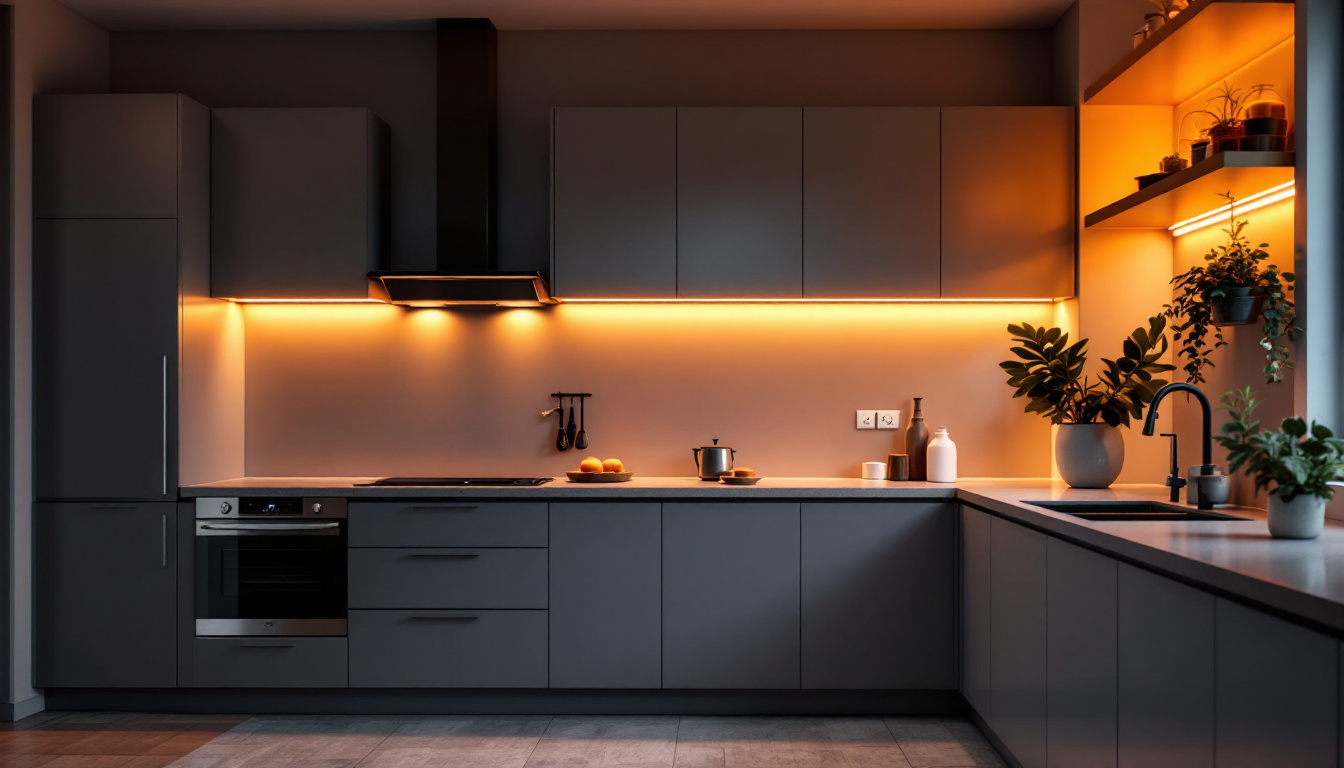
In the world of industrial lighting, efficiency and innovation are paramount. As a lighting contractor, understanding the nuances of industrial light bulbs can greatly enhance project outcomes and client satisfaction. This article explores various hacks and tips that can elevate your expertise and streamline your operations.
Industrial light bulbs are designed to withstand the rigors of demanding environments. Unlike standard bulbs, they must offer durability, energy efficiency, and optimal performance. Familiarizing oneself with the different types of industrial bulbs is crucial for selecting the right product for each application.
There are several types of industrial light bulbs available in the market, each with unique characteristics. LED, fluorescent, and high-intensity discharge (HID) bulbs are among the most common. LEDs are celebrated for their energy efficiency and longevity, while fluorescents are often used in larger spaces due to their brightness. HIDs, on the other hand, are ideal for outdoor applications due to their high lumen output. Additionally, there are specialty bulbs designed for specific tasks, such as vapor-tight fixtures for wet locations or explosion-proof bulbs for hazardous environments, ensuring safety and reliability in various settings.
When selecting industrial light bulbs, consider factors such as lumens, color temperature, and wattage. Lumens measure brightness, while color temperature affects the ambiance of the space. A cooler color temperature (above 5000K) is often preferred for industrial settings, as it mimics daylight and enhances visibility. Furthermore, the beam angle of the bulb is also an important consideration, as it determines how light is distributed across a given area. A narrow beam angle may be suitable for focused tasks, while a wider angle is better for general illumination, ensuring that every corner of the workspace is adequately lit.
Energy efficiency is a critical concern in industrial lighting. Opting for energy-efficient bulbs not only reduces electricity costs but also contributes to sustainability efforts. Many facilities are now seeking to lower their carbon footprints, making energy-efficient lighting solutions more desirable than ever. Furthermore, the shift towards smart lighting systems, which can be programmed to adjust brightness based on occupancy or natural light levels, is revolutionizing how industries approach energy consumption. These advanced systems not only enhance operational efficiency but also promote a greener approach to industrial lighting, aligning with the global push for sustainability in all sectors.
smart lighting technology has revolutionized the way industrial spaces are illuminated. By integrating advanced controls and automation, contractors can offer clients enhanced functionality and energy savings. This shift towards smarter solutions not only improves operational efficiency but also contributes to sustainability efforts, as many systems are designed to minimize energy waste and reduce carbon footprints.
Smart lighting systems provide numerous benefits, including remote control capabilities, programmable settings, and real-time monitoring. These features allow for tailored lighting solutions that adapt to the specific needs of a facility, enhancing both safety and productivity. For instance, motion sensors can automatically adjust lighting levels based on occupancy, ensuring that areas are well-lit when needed and conserving energy when they are not in use. Additionally, the ability to customize lighting scenes can create a more comfortable and productive work environment, catering to different tasks and preferences.
Integrating smart lighting with existing building management systems can be a game-changer. This integration allows for centralized control and monitoring, making it easier to manage energy consumption and optimize lighting schedules. Contractors should familiarize themselves with various integration options to provide comprehensive solutions to clients. Moreover, the interoperability of smart lighting with other systems, such as HVAC and security, can lead to an overall enhancement of building performance. For example, when combined with smart thermostats, lighting can be programmed to dim or turn off in unoccupied areas, further maximizing energy efficiency and creating a more cohesive smart building ecosystem.
While the initial investment in smart lighting technology may be higher than traditional systems, the long-term savings often outweigh the costs. By reducing energy consumption and maintenance expenses, smart lighting can yield significant financial benefits over time. Educating clients about these advantages can facilitate their decision-making process. Additionally, many utility companies offer rebates and incentives for the installation of energy-efficient lighting systems, which can help offset initial costs. It’s also worth noting that smart lighting can enhance the lifespan of fixtures and bulbs, reducing the frequency of replacements and associated labor costs, making it a financially savvy choice for businesses looking to invest in their infrastructure.
Proper installation of industrial light bulbs is crucial for maximizing performance and longevity. Following best practices not only ensures safety but also enhances the overall effectiveness of the lighting system.
Safety should always be a top priority during installation. Contractors must adhere to local electrical codes and regulations, ensuring that all wiring and fixtures are properly installed. Utilizing personal protective equipment (PPE) and following safety protocols can prevent accidents and injuries on the job site. Additionally, it is important to conduct a risk assessment prior to beginning the installation process. This assessment can identify potential hazards specific to the site, allowing for proactive measures to be put in place. Regular safety training sessions for the installation team can also reinforce the importance of safety practices and keep everyone updated on the latest safety standards.
The placement of light fixtures significantly impacts illumination quality. Conducting a thorough assessment of the space before installation can help identify the best locations for fixtures. Factors such as ceiling height, room layout, and intended use should all be considered to achieve optimal lighting distribution. For instance, in areas where detailed tasks are performed, such as assembly lines or workshops, brighter, more focused lighting may be necessary to reduce eye strain and improve productivity. Furthermore, utilizing lighting design software can aid in visualizing different configurations and help in making data-driven decisions regarding fixture placement, ensuring that the lighting not only meets functional requirements but also enhances the aesthetic appeal of the space.
After installation, testing the lighting system is essential. This step allows contractors to make necessary adjustments to ensure that the lighting meets the required specifications. Clients should be involved in this process to ensure their satisfaction with the final outcome. It’s also beneficial to implement a post-installation review, where feedback can be gathered from the users of the space. This feedback can provide valuable insights into how the lighting performs in real-world conditions and highlight any areas that may require further adjustments. Additionally, documenting the testing results and any modifications made can serve as a useful reference for future projects, helping to refine the installation process and improve overall efficiency.
Regular maintenance is key to prolonging the lifespan of industrial light bulbs and ensuring consistent performance. Implementing a maintenance schedule can help identify potential issues before they escalate.
Conducting routine inspections of lighting fixtures can help detect problems early. Look for signs of wear, such as flickering lights or discoloration, which may indicate that a bulb is nearing the end of its life. Regularly cleaning fixtures can also enhance performance by eliminating dust and debris that can obstruct light output.
Proactive bulb replacement is a smart strategy for maintaining optimal lighting conditions. Rather than waiting for a bulb to fail, consider replacing them at regular intervals based on their expected lifespan. This approach minimizes downtime and ensures that the facility remains well-lit at all times.
Educating clients about the importance of maintenance can foster a strong relationship and ensure they understand how to care for their lighting systems. Providing them with a simple maintenance checklist can empower them to take an active role in preserving their lighting investments.
Incorporating technology into lighting projects can significantly enhance efficiency and effectiveness. From advanced lighting controls to energy management systems, technology plays a vital role in modern industrial lighting.
Advanced lighting controls, such as occupancy sensors and daylight harvesting systems, can optimize energy usage. Occupancy sensors automatically adjust lighting based on the presence of individuals in a space, while daylight harvesting takes advantage of natural light, reducing reliance on artificial lighting.
Energy management systems provide valuable insights into energy consumption patterns. By analyzing data collected from lighting systems, contractors can identify areas for improvement and recommend strategies to enhance efficiency. This data-driven approach can lead to substantial cost savings for clients.
The lighting industry is constantly evolving, with new technologies and trends emerging regularly. Staying informed about these developments can help contractors remain competitive and offer the best solutions to their clients. Attending industry conferences, webinars, and training sessions can be beneficial for continuous learning.
Effective communication with clients is essential for successful project execution. Educating clients about lighting options, benefits, and maintenance can lead to more informed decisions and greater satisfaction.
Every client has unique needs and preferences when it comes to lighting. Taking the time to understand their specific requirements can help tailor solutions that meet their expectations. Conducting thorough consultations and asking the right questions can uncover valuable insights.
Clear and detailed proposals are crucial for setting expectations and avoiding misunderstandings. Include information about product specifications, installation timelines, and costs to ensure transparency. This approach builds trust and fosters a positive working relationship.
After project completion, following up with clients is a best practice. This step not only demonstrates professionalism but also provides an opportunity to gather feedback. Understanding client experiences can help improve future projects and enhance service offerings.
For lighting contractors, mastering the intricacies of industrial light bulbs and smart lighting solutions is essential for success. By understanding the types of bulbs available, leveraging technology, and maintaining open communication with clients, contractors can elevate their services and deliver exceptional results. Implementing these hacks and best practices will not only enhance project outcomes but also contribute to long-term client satisfaction.
Ready to take your lighting projects to the next level? At LumenWholesale, we provide you with the high-quality, spec-grade lighting products you need to outshine the competition. Say goodbye to inflated markups and hello to unbeatable wholesale prices. Our extensive selection is designed to meet the highest industry standards, ensuring reliability and high performance for every project. Plus, with free shipping on bulk orders, you can enjoy premium lighting solutions at the best value — without hidden fees or compromises. Elevate your service offerings and delight your clients with the perfect blend of quality, affordability, and convenience. Discover the difference at LumenWholesale – Wholesale Lighting at the Best Value.

Discover essential insights for lighting contractors on the intricacies of wall outlets.

Discover how T light bulbs can revolutionize your lighting projects by boosting efficiency and reducing energy consumption.

Discover the hidden aspects of under cabinet LED strip lighting that even seasoned lighting contractors might miss.

Discover how lighting contractors can enhance their projects with surface mounted can lights.